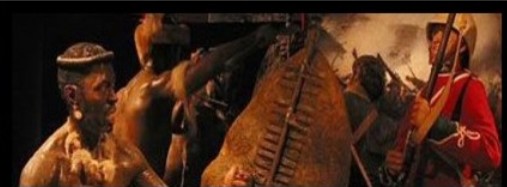| Latest topics | » The Pictorial World - March 15th 1879 Yesterday at 1:13 pm by ben2000 » The lost diary of Pvt James Owen Thu Jul 25, 2024 12:03 pm by miklew » Last of the 24th at Isandhlwana Wed Jul 24, 2024 6:16 pm by John Young » What was the uniform of field marshals/generals in the zulu war? Mon Jul 22, 2024 6:53 am by John Young » Henderson and the NNH at Rorke's Drift  Sat Jul 20, 2024 12:17 pm by SRB1965 » Capt. D. Hayes 1/3rd Regt., NNC Thu Jul 18, 2024 11:11 am by Julian Whybra » The Wrecked Camp Wed Jul 17, 2024 4:33 pm by Julian Whybra » Private N/N John Robert Branch 90th Regiment and his discovered diary Mon Jul 15, 2024 8:53 pm by 1879graves » Private John Scott 24th Regiment a fugitive at large Sun Jul 14, 2024 12:06 pm by 1879graves » 90th foot sgt T. Collins 214 Sun Jul 14, 2024 10:57 am by johnman » Baron Von Steitencron Wed Jul 10, 2024 3:10 pm by Julian Whybra » Sgt Joseph Windridge, Defender of Rorke's Drift - Memorial Tue Jul 09, 2024 3:15 am by 90th » Writing advice Sun Jul 07, 2024 4:04 pm by Julian Whybra » South Africa 1877-79, 1 clasp, 1877-8-9 (4389 Fr. Sergt. S. Smith. O/2. Bde. R.A.) Sun Jul 07, 2024 9:30 am by rai » The trashing of the Zulu monument to the brave warriors at Isandlawana March 12, 2024 has been blamed on scrap metal scavengers. Thu Jul 04, 2024 7:41 pm by ADMIN» The Goodwill Zulu Festival: Celebrating the Welsh and KwaZulu Natal Shared Heritage. Thu Jul 04, 2024 7:27 pm by ADMIN» Any nominal role of G Coy 2/24th regiment  Thu Jul 04, 2024 11:18 am by Wayne » Bassage Diary Thu Jul 04, 2024 9:31 am by Julian Whybra » Prior to Sihayo's Kraal  Thu Jul 04, 2024 9:19 am by 90th » British Fort Locations Thu Jul 04, 2024 3:40 am by 90th » Sergeant 1064 Tom Hick / Hicks G Company 2/24th Regiment Wed Jul 03, 2024 11:05 am by Julian Whybra » A Hungarian soldier in the Zulu War (?) Fri Jun 28, 2024 2:31 pm by Mr M. Cooper » Private 25B/279 Henry Sears Bugler E Company 24th Reg. KIA Isandlwana Thu Jun 27, 2024 1:07 pm by gardner1879 » Hamilton Browne's birthday Fri Jun 21, 2024 9:22 am by Julian Whybra » Zulu "Corps" Thu Jun 20, 2024 6:01 pm by Hobbes » Army Pay Department Personnel Thu Jun 20, 2024 11:49 am by Julian Whybra » Ntshingwayo birth date Sun Jun 16, 2024 11:37 am by Hobbes » Zibhebhu and Cetshwayo's family Wed Jun 05, 2024 9:11 pm by Julian Whybra » Smith's Store/Hotel Wed Jun 05, 2024 6:06 pm by Julian Whybra » Corporal James Frowen Williams F Company.  Tue Jun 04, 2024 5:20 pm by Julian Whybra » Shaka iLembe Sat Jun 01, 2024 1:27 pm by Jon84 » Bugler 1415 Thomas Finn / Flin 90th Regiment  Sat May 25, 2024 11:28 am by johnman » Inspector-General Evelyn Richard Hugh Pollard Tue May 14, 2024 10:13 am by ADMIN» Alfred Fairlie Henderson photographs. Sat May 11, 2024 8:01 am by Julian Whybra » Fairlie's Native Police Thu May 02, 2024 9:12 pm by Hobbes |
| July 2024 | | Mon | Tue | Wed | Thu | Fri | Sat | Sun |
|---|
| 1 | 2 | 3 | 4 | 5 | 6 | 7 | | 8 | 9 | 10 | 11 | 12 | 13 | 14 | | 15 | 16 | 17 | 18 | 19 | 20 | 21 | | 22 | 23 | 24 | 25 | 26 | 27 | 28 | | 29 | 30 | 31 | | | | |  Calendar Calendar |
|
| Top posting users this month | |
| New topics | » The Pictorial World - March 15th 1879 Yesterday at 1:13 pm by ben2000 » The lost diary of Pvt James Owen Thu Jul 25, 2024 12:03 pm by miklew » Last of the 24th at Isandhlwana Wed Jul 24, 2024 5:53 pm by miklew » What was the uniform of field marshals/generals in the zulu war? Sun Jul 21, 2024 12:30 pm by darthvaix » Henderson and the NNH at Rorke's Drift  Fri Jul 19, 2024 1:29 pm by SRB1965 » Capt. D. Hayes 1/3rd Regt., NNC Wed Jul 17, 2024 10:52 pm by Julian Whybra » The Wrecked Camp Sun Jul 14, 2024 8:51 am by 61MECH » The trashing of the Zulu monument to the brave warriors at Isandlawana March 12, 2024 has been blamed on scrap metal scavengers. Thu Jul 04, 2024 7:41 pm by ADMIN» The Goodwill Zulu Festival: Celebrating the Welsh and KwaZulu Natal Shared Heritage. Thu Jul 04, 2024 7:27 pm by ADMIN |
| Zero tolerance to harassment and bullying. | |
Due to recent events on this forum, we have now imposed a zero tolerance to harassment and bullying. All reports will be treated seriously, and will lead to a permanent ban of both membership and IP address.
Any member blatantly corresponding in a deliberate and provoking manner will be removed from the forum as quickly as possible after the event.
If any members are being harassed behind the scenes PM facility by any member/s here at 1879zuluwar.com please do not hesitate to forward the offending text.
We are all here to communicate and enjoy the various discussions and information on the Anglo Zulu War of 1879. Opinions will vary, you will agree and disagree with one another, we will have debates, and so it goes.
There is no excuse for harassment or bullying of anyone by another person on this site.
The above applies to the main frame areas of the forum.
The ring which is the last section on the forum, is available to those members who wish to partake in slagging matches. That section cannot be viewed by guests and only viewed by members that wish to do so. |
| Fair Use Notice | | Fair use notice.
This website may contain copyrighted material the use of which has not been specifically authorised by the copyright owner.
We are making such material and images are available in our efforts to advance the understanding of the “Anglo Zulu War of 1879. For educational & recreational purposes.
We believe this constitutes a 'fair use' of any such copyrighted material, as provided for in UK copyright law. The information is purely for educational and research purposes only. No profit is made from any part of this website.
If you hold the copyright on any material on the site, or material refers to you, and you would like it to be removed, please let us know and we will work with you to reach a resolution. |
| | | Isandlwana Drummer Boy's (Mentioned by) |  |
|
+16John Ray63 Mr Greaves warrior3 90th sas1 old historian2 littlehand Dave 1879graves Brett Hendey tasker224 Neil Aspinshaw Frank Allewell Chelmsfordthescapegoat ADMIN 20 posters | |
| Author | Message |
|---|
1879graves
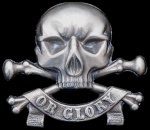
Posts : 3379
Join date : 2009-03-03
Location : Devon
 |  Subject: Re: Isandlwana Drummer Boy's (Mentioned by) Subject: Re: Isandlwana Drummer Boy's (Mentioned by)  Thu Mar 17, 2011 5:01 pm Thu Mar 17, 2011 5:01 pm | |
| Hi Mr Greaves
Now that is a very good question, to which I do not know the answer, hopefully someone might know on here. |
|   | | ADMIN

Posts : 4354
Join date : 2008-11-01
Age : 65
Location : KENT
 |  Subject: Re: Isandlwana Drummer Boy's (Mentioned by) Subject: Re: Isandlwana Drummer Boy's (Mentioned by)  Thu Mar 17, 2011 11:35 pm Thu Mar 17, 2011 11:35 pm | |
| Gent's came across this (Not Zulu war era, but wonder if it did apply back then)
ONNAUGHT TELEGRAPH, April 22nd 1916:-
A SOLDIER UNDER AGE.
"Mr. Doris asked the Under Secretary of State for War, if he was aware that Private Thomas Moran, No. 6521, 3rd Battalion, Connaught Rangers, enlisted at Westport on the 27th July, 1915, when he was only 17 years, 1 week, without the consent of his widowed mother, Catherine Moran, and that Mrs. Moran has made several unsuccessful applications for the discharge of her only son on the grounds that he is not of military age: and if he will state whether, if Moran cannot be discharged, he will be withdrawn from military service and placed at other necessary work until he attains the age of 19. Mr. Tenant ? I would take the liberty of referring the Honourable member to the previous answer I gave on this subject to a question put to me by the Honourable member for Blackburn on the 2nd November, 1915.
The following is the reply to Mr. Snowden referred to: -
Mr. Tenant ? The minimum age at which men are authorized to be taken for service with the Colours is at present nineteen, and no man is accepted for direct enlistment unless he gives his age on attestation as nineteen or over. Strict orders have been given to recruiting officers that unless a recruit evidently has the physique equivalent to his declared age he will not be enlisted without an examination of his birth certificate. If a recruit enlists who has declared his age to be over nineteen, but, who is actually below the age, the War Office do not consider that to be sufficient cause itself for discharging him from the Army.
Under existing arrangements, a soldier who is actually below nineteen may be sent abroad provided his physique is considered by the medical authorities to be that of a man of eighteen and a half. If his physique is below that of a man of eighteen and a half he is retained for training and Service at home until he reaches the required standard.
In practise, however, the War Office always allow a lad who is under seventeen be discharged provided application is made to his Commanding Officer, whilst he is serving at home. In the case of all soldiers serving Overseas, the question of discharge or return to his country rests with the Commanding-in-Chief, who retains only those considered fit for service abroad." |
|   | | littlehand
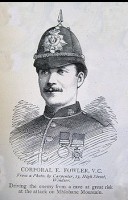
Posts : 7076
Join date : 2009-04-24
Age : 55
Location : Down South.
 |  Subject: Re: Isandlwana Drummer Boy's (Mentioned by) Subject: Re: Isandlwana Drummer Boy's (Mentioned by)  Thu Mar 17, 2011 11:57 pm Thu Mar 17, 2011 11:57 pm | |
| Here are some photo's of the attestation and records papers for 1977 William Thake, 88th Regiment of Foot/ 1st Battalion, The Connaught Rangers. He mustered in 15th December 1873 at the age of 14, 4 1/2 feet tall with a listed trade of musician so he was a drummer boy literally. He rose through the ranks eventually reaching Canteen Sergeant in 1888. His overseas service included India and South Africa (Zulu War, South Africa Medal with 1877-8-9 clasp) and earned the Long Service and Good Conduct Medal. He was discharged for medical reasons (hepatitis) on 5 April 1894 with over 21 years of service under his belt. The 1901 census lists Thake living in Stepney, Middlesex, England with his wife Amy (who is also listed in his papers as with the regiment) and two children - Cyril and Muriel. His occupation is listed as an Inspector of Customs. [You must be registered and logged in to see this image.] |
|   | | 1879graves

Posts : 3379
Join date : 2009-03-03
Location : Devon
 |  Subject: Re: Isandlwana Drummer Boy's (Mentioned by) Subject: Re: Isandlwana Drummer Boy's (Mentioned by)  Tue Mar 29, 2011 7:11 pm Tue Mar 29, 2011 7:11 pm | |
| Hi All Just for anyone interested. This comes from [You must be registered and logged in to see this link.][You must be registered and logged in to see this image.]Side Drum 1st Battalion 24th Regiment recovered from the battlefield of Isandhlwana, 1879 |
|   | | tasker224

Posts : 2101
Join date : 2010-07-30
Age : 57
Location : North London
 |  Subject: Re: Isandlwana Drummer Boy's (Mentioned by) Subject: Re: Isandlwana Drummer Boy's (Mentioned by)  Tue Mar 29, 2011 7:37 pm Tue Mar 29, 2011 7:37 pm | |
| Several ood points all round there.
There is a school of thought that those who returned to camp on the night of the 22nd did indeed see small bodies hanging from butchers meat hooks - these small bodies could have been lamb carcasses about to be butchered legitmately by the cooks when the attack commenced - esilty mistaken for young lads, at night, in such a highly charged atmosphere.
Zulu stripping and disembowelling of their enemies was a culturally motivated act in order to free the spirit of the dead enemy and should not be mistaken for "brutality" or "torture" as it was by the public and settlers of the time. (It is an act of respect to the dead enemy). Let us not criticise them for that.
Brutality however, in hand to hand fighting is completely believable and highly precedented throughout history. Look how the English behaved in the final stages at Agincourt, or how the Roman army behaved in the final defeat of the Iceni in ancient Britain.
Hanging from meat hooks, as reported by witnesses who were there - who are we to disbelieve them? Certain London gangsters hung their opponents from meat hooks - to do so in the heat of a brutal battle is not beyond the limits of my imagination at least.
It is not unprecedented for army officers/ncos to sanitise and play down the suffering and circumstances of their mens' deaths in action to relatives and press at home.
|
|   | | Mr Greaves

Posts : 747
Join date : 2009-10-18
 |  Subject: Re: Isandlwana Drummer Boy's (Mentioned by) Subject: Re: Isandlwana Drummer Boy's (Mentioned by)  Tue Mar 29, 2011 10:50 pm Tue Mar 29, 2011 10:50 pm | |
| Here's a question. Why is there only mention of seeing the boys on hooks. Why is there no mention of someone removing them from the hooks and burying them which would have been the proper thing to do. There is no record of young boys being at Isandlwana and no mention of this incident by officers. The house of Lords only make reference to the drummer boys through a letter from a Soldier. At the end of the day the drummer boys issue is based on hearsay evidence not factual. British properganda in 1879 at it's best. |
|   | | tasker224

Posts : 2101
Join date : 2010-07-30
Age : 57
Location : North London
 |  Subject: Re: Isandlwana Drummer Boy's (Mentioned by) Subject: Re: Isandlwana Drummer Boy's (Mentioned by)  Tue Mar 29, 2011 10:59 pm Tue Mar 29, 2011 10:59 pm | |
| Mr G - see my final point above.
There are all sorts of reasons for this and and they are mainly honourable.
|
|   | | Ray63

Posts : 705
Join date : 2012-05-05
 |  Subject: Re: Isandlwana Drummer Boy's (Mentioned by) Subject: Re: Isandlwana Drummer Boy's (Mentioned by)  Fri May 01, 2015 10:45 pm Fri May 01, 2015 10:45 pm | |
| |
|   | | John
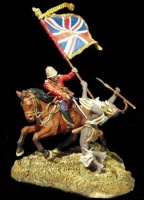
Posts : 2558
Join date : 2009-04-06
Age : 61
Location : UK
 |  Subject: Re: Isandlwana Drummer Boy's (Mentioned by) Subject: Re: Isandlwana Drummer Boy's (Mentioned by)  Sat May 02, 2015 9:50 pm Sat May 02, 2015 9:50 pm | |
| |
|   | | Julian Whybra
Posts : 4021
Join date : 2011-09-12
Location : Billericay, Essex
 |  Subject: Re: Isandlwana Drummer Boy's (Mentioned by) Subject: Re: Isandlwana Drummer Boy's (Mentioned by)  Tue Jun 14, 2016 5:36 pm Tue Jun 14, 2016 5:36 pm | |
| sas1
Surely your source cited for Lord Elcho's remarks should be HL not HC? Yes?
Admin
You've duplicated two of your drummer boy accounts: Samuel Jones 45th Regt and Sam Jones NMR are one and the same person (NMR) and the same account.
|
|   | | Julian Whybra
Posts : 4021
Join date : 2011-09-12
Location : Billericay, Essex
 |  Subject: Re: Isandlwana Drummer Boy's (Mentioned by) Subject: Re: Isandlwana Drummer Boy's (Mentioned by)  Fri Nov 23, 2018 8:45 pm Fri Nov 23, 2018 8:45 pm | |
| Anyone interested in pursuing the topic of the Boys and torture might like to read the third essay by Frederic Bomy and myself in Studies in the Zulu War vol V. It contains quite literally an overwhelming body of evidence relating to this subject. |
|   | | barry
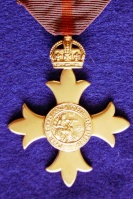
Posts : 947
Join date : 2011-10-21
Location : Algoa Bay
 |  Subject: The drummer boys question. Subject: The drummer boys question.  Thu Nov 29, 2018 10:30 am Thu Nov 29, 2018 10:30 am | |
| Hi Julian,
Bravo , firstly, commendation to you and Frederic for the publication of a slice of real history. The evidence on mutilations etc is overwhelming, but common knowledge to most Natalians , particularly to those with roots going back to the AZW.
Frederic is also to be highly commended for his super sleuthing, he must throw his net wider and find more answers to other vexing unanswered questions vis-à-vis Isandlwana.
What I find curious however is that some historians , both armchair amateurs and some of the more prominent , steadfastly disbelieve all of this. Maybe there is egg on their faces as they have already painted themselves into a corner , or acknowledge at least inwardly, with some guilt, that they did not do their research on the subject nearly thoroughly enough.
Keep up the good work JW, we look forward to the outcome of more research of this standard.
regards
barry
Last edited by barry on Sat Dec 01, 2018 2:57 am; edited 2 times in total |
|   | | Julian Whybra
Posts : 4021
Join date : 2011-09-12
Location : Billericay, Essex
 |  Subject: Re: Isandlwana Drummer Boy's (Mentioned by) Subject: Re: Isandlwana Drummer Boy's (Mentioned by)  Thu Nov 29, 2018 10:35 am Thu Nov 29, 2018 10:35 am | |
| Thank you for the compliment Barry. And thank you for the invaluable assistance given.
There will definitely be more to come. |
|   | | ymob
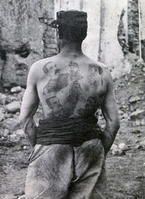
Posts : 2268
Join date : 2010-10-22
Location : France
 |  Subject: Re: Isandlwana Drummer Boy's (Mentioned by) Subject: Re: Isandlwana Drummer Boy's (Mentioned by)  Thu Nov 29, 2018 5:06 pm Thu Nov 29, 2018 5:06 pm | |
| Bonsoir Barry,
Thank you very much for your encouragement. Indeed, there is still a lot of fascinating "dark corner" to explore. I join Julian in thanking you for your help -Much appreciated-.
Frédéric |
|   | | Eddie
Posts : 794
Join date : 2022-07-13
Age : 65
Location : Newport Wales
 |  Subject: Re: Isandlwana Drummer Boy's (Mentioned by) Subject: Re: Isandlwana Drummer Boy's (Mentioned by)  Thu Sep 08, 2022 3:38 pm Thu Sep 08, 2022 3:38 pm | |
| Quite a few members have plenty of knowledge of the contents within soldiers letters. I ask that you read them again, as I believe you have missed a vital point stated in one or two of them.
That is, that it is stated in letters, that it was getting dark as they assaulted towards the camp, and haven't stated that it was dark, so they would have seen the devastation.
Also the ex or serving members of the forum will know that this was a planned assault to take back their camp. They would have assaulted up and over the camp clearing any remaining Zulu stragglers out, as also mentioned in letters. They would not have stopped as soon as they entered the camp, they would have went through it, clearing it.
I think the Zulu were capable of these accusations.
Once the camp was cleared they say they slept amongst the dead, but probably slept on the out skirts. |
|   | | Julian Whybra
Posts : 4021
Join date : 2011-09-12
Location : Billericay, Essex
 |  Subject: Re: Isandlwana Drummer Boy's (Mentioned by) Subject: Re: Isandlwana Drummer Boy's (Mentioned by)  Thu Sep 08, 2022 3:56 pm Thu Sep 08, 2022 3:56 pm | |
| Can I respectfully refer you to the Essay The Wrecked Camp at Isandhlwana in Studies in the Zulu War vol. IV (Writtle, 2017) pp. 45-91, which looked at precisely what was visible at dusk on the 22nd and dawn on the 23rd and the evidence as given in letters from the rearguard (E coy and the NMP) who left the camp area well after dawn.
The next volume (V), (Writtle, 2018) in the essay on Granger (pp. 74-78) looked these same letters with regard to what was seen of the Boys. |
|   | | Eddie
Posts : 794
Join date : 2022-07-13
Age : 65
Location : Newport Wales
 |  Subject: Re: Isandlwana Drummer Boy's (Mentioned by) Subject: Re: Isandlwana Drummer Boy's (Mentioned by)  Thu Sep 08, 2022 4:04 pm Thu Sep 08, 2022 4:04 pm | |
| |
|   | | Eddie
Posts : 794
Join date : 2022-07-13
Age : 65
Location : Newport Wales
 |  Subject: Re: Isandlwana Drummer Boy's (Mentioned by) Subject: Re: Isandlwana Drummer Boy's (Mentioned by)  Thu Sep 08, 2022 4:36 pm Thu Sep 08, 2022 4:36 pm | |
| Not just that, I think the officers and the government of the day was attempting to be politically correct, in stating that no such thing occured. Not to further heap more misery on the families of the deceased.
Also in letters soldiers have stated coming across dead friends, naming them and the sight they witnessed. |
|   | | Julian Whybra
Posts : 4021
Join date : 2011-09-12
Location : Billericay, Essex
 |  Subject: Re: Isandlwana Drummer Boy's (Mentioned by) Subject: Re: Isandlwana Drummer Boy's (Mentioned by)  Thu Sep 08, 2022 4:43 pm Thu Sep 08, 2022 4:43 pm | |
| Perhaps 'politically correct' is not quite the right phrase. Certainly it wanted not cause pain to relatives (although, goodness knows, soldiers' letters would have been enough to do that) and it would also not want to put in the public domain the nature of war against uncivilized opponents, and the direction in which the local colonial government policy had taken them. The public, then as now, would be quick to look for someone to point the finger at without necessarily going into all the details surrounding the whys and wherefores. |
|   | | Eddie
Posts : 794
Join date : 2022-07-13
Age : 65
Location : Newport Wales
 |  Subject: Re: Isandlwana Drummer Boy's (Mentioned by) Subject: Re: Isandlwana Drummer Boy's (Mentioned by)  Thu Sep 08, 2022 5:22 pm Thu Sep 08, 2022 5:22 pm | |
| Completely agree Julian
I agree that they surely were uncivilised back then, and out of the many of thousands of Zulus, many would have been from little remote villages having probably never visited a city or witnessed modern living.
I would also imaging violent brutal clashes with neighboring villages and tribes. Because let's admit it, they were tribesmen back then. |
|   | | Julian Whybra
Posts : 4021
Join date : 2011-09-12
Location : Billericay, Essex
 |  Subject: Re: Isandlwana Drummer Boy's (Mentioned by) Subject: Re: Isandlwana Drummer Boy's (Mentioned by)  Thu Sep 08, 2022 9:53 pm Thu Sep 08, 2022 9:53 pm | |
| To be honest I should think most European colonists had never visited a city either!
The nearest one which might warrant that name might have been Cairo!! |
|   | | | | Isandlwana Drummer Boy's (Mentioned by) |  |
|
Similar topics |  |
|
| | Permissions in this forum: | You cannot reply to topics in this forum
| |
| |
| |
